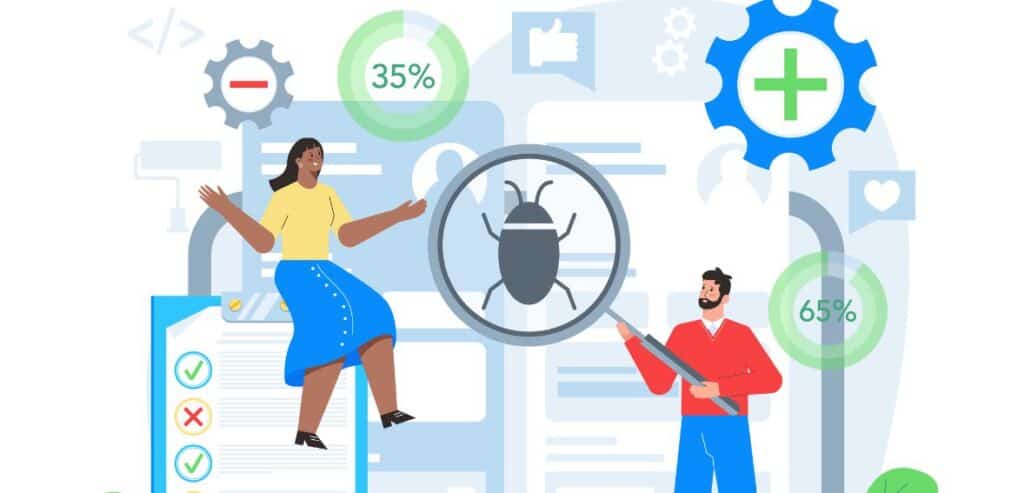
By KarenDUhl August 7, 2025
Your point-of-sale (POS) system’s speed can have a big impact on customer satisfaction, employee productivity, and ultimately your bottom line in this era of instant gratification. The time it takes to finish a transaction can either keep lines moving or lead to annoyance and abandoned purchases, regardless of whether you’re managing a busy coffee shop or a multi-register retail chain.
Making sure your operations are optimized for efficiency and dependability is more important than simply counting seconds when speed testing your point-of-sale system, especially as consumer expectations rise and digital transactions become more intricate.
What is POS Speed Testing and Who Needs It?

Testing the speed at which your system can handle various transaction types in real-world scenarios is known as point-of-sale speed testing. This covers everything, from scanning products and starting a sale to applying discounts and finishing the payment process. Any company that uses a point-of-sale system should test its speed on a regular basis; big retailers aren’t the only ones.
Cafes, salons, quick-service eateries, mobile vendors, and even medical clinics that oversee patient checkouts fall under this category. Delays that accumulate during peak hours can result in lower customer loyalty and lost revenue. By using speed testing, you can locate bottlenecks and address them before they become costly.
Core Metrics to Measure When Speed Testing
You should pay attention to a few important metrics when performing a POS speed test. Examine the transaction completion time first, from the time the first item is scanned to the time the receipt is printed. Next, evaluate the time it takes for payments to be authorized, particularly when using digital wallets, credit cards, or mobile payment systems.
You should also track how long it takes to look up accounts and apply for rewards in systems that have loyalty programs. Remember that receipt generation speed and user interface load times can add valuable seconds to every sale. You can see where slowdowns are happening and where optimizations are most needed with the help of these metrics.
How Hardware and Connectivity Affect Speed

When transactions begin to lag, it’s simple to point the finger at your software, but hardware is just as much to blame. Even with optimized software, outdated terminals and slow networks bottleneck checkout speed. Implementing integrated payment solutions—where your POS, payment processing, and features like loyalty and inventory sync seamlessly—can dramatically eliminate those delays and accelerate the entire transaction flow.
The speed at which payments are processed can also be severely impacted by unreliable Ethernet connections or bad Wi-Fi, particularly for cloud-based systems. Always check your bandwidth, router location, and internet latency when speed testing. Background apps and device battery levels can also cause issues for stores that use mobile checkout. In this context, speed testing refers to examining your entire system, not just the screen in front of the cashier.
Why Employee Training Influences POS Speed
When run by untrained personnel, even the fastest point-of-sale systems can become slow. Each transaction takes extra seconds due to human factors like manual workarounds, unclear workflows, and interface unfamiliarity. Seeing how your employees use the system during a sale should be a part of your speed test.
Do they confidently navigate menus and functions, or do they hesitate, go back, or ask for assistance? Designing more user-friendly interfaces and creating onboarding programs that are more successful requires this information. A skilled worker can transform a slow point-of-sale system into a quick and easy customer service tool.
Stress Testing During Peak Hours: A Must-Do

Testing your point-of-sale system on a calm Monday afternoon is insufficient. Testing it under pressure, during your busiest times, yields true insights. You want to mimic, or better yet, track, how the system functions when ten or more transactions are occurring at once. Does it crash? Lag? Become more sluggish with each new input? Your system’s scalability and ability to manage volume as your business expands are determined by stress testing. Additionally, it assists in identifying any system memory leaks, third-party API lags, or database delays.
The Role of Software Updates and Integrations

Although software updates frequently result in speed increases, they can also bring bugs that cause lag. Testing is therefore crucial following any significant update or the addition of new third-party integrations. Your POS is connected to inventory management systems, payment gateways, and customer relationship management tools.
If one of them slows down, it drags the rest with it. After installing anything new, develop the practice of checking response times and system logs. Before releasing updates live, test in the test environments provided by the majority of POS providers.
The Customer Experience Factor
POS speed determines your customers’ last impression and has an impact on more than just your backend. Imagine a busy café in the middle of the morning rush. The line grows quickly if processing each customer takes ten seconds longer than anticipated. Individuals begin to glance at their timepieces, move out of line, or forego coffee entirely.
Quick and dependable checkouts show professionalism and consideration for the time of the customer. Conversely, lagging systems imply inefficiency and disarray. Enhancing speed does more than just shorten lines; it also strengthens your brand’s dependability and wins over customers.
Benchmarking Against Industry Standards
So, how can you determine whether your point-of-sale system is “fast enough”? Benchmarking against industry standards is important—average cash register completions should take less than ten seconds, and modern systems complete payments in under three. If you’re reassessing your setup, it makes sense to start with choosing the right POS by evaluating your business needs, features, integrations, and provider reliability.
Look for independent studies on POS speed in your industry or ask your provider about average processing times. If you’re assessing a new system, you can also compare it side by side. Setting performance goals and defending upgrades to stakeholders are made easier with the use of genuine benchmarks.
Troubleshooting and Speed Optimization Techniques
Don’t freak out if your point-of-sale system is slow. Isolate the issue first. Does it have to do with the hardware? Caused by software? Based on a network? After identifying the problem, implement the solution, which may include optimizing your database queries, upgrading your router, shutting down background apps, or cleaning software caches.
Remember to simplify the user interface (UI); cutting down on menu layers and clicks can have a significant impact. Performance dashboards are integrated into a lot of POS systems. Make use of them. Additionally, if your current setup simply cannot keep up with your pace, don’t rule out switching platforms.
Testing is Ongoing, Not One-and-Done
POS speed testing should be a regular component of your operations strategy rather than a one-time event. Your system must adapt to the expansion of your company, changes in consumer behavior, and the introduction of new goods and services. Include speed checks in your quarterly evaluations.
Plan spot checks for sales occasions or peak seasons. Ask employees and even customers for their opinions. Frequent testing enables you to prevent issues rather than respond to them.
Field Testing vs. Lab Testing—Why Simulated Speed Isn’t Always Enough
It’s simple to believe that a system operating quickly in a controlled setting will perform similarly in real-world scenarios. However, the reality of a crowded bar on a Friday night or the holiday rush in a store tells a different tale. The only way to find out how well your point-of-sale system works when it counts is to conduct field testing, which involves putting it through its paces during real peak hours.
Unpredictable delays such as employee response times, customer behavior, and third-party service lags are frequently ignored by lab simulations. You may find that the card reader hesitates just enough to annoy visitors, or that transactions slow down when you switch between POS screens.
Backend logs don’t reveal these kinds of problems. Even though a speed test on a calm Tuesday afternoon might yield flawless results, it won’t prepare you for the chaos of real-world demand. You can prevent false confidence in your tech stack and obtain a more accurate performance snapshot by comparing field and lab data.
Using Speed Testing to Train Staff and Improve Workflow

Employee interaction is just as important to POS performance as hardware and software. Speed testing provides the ideal opportunity to examine how employees use the system, which is an underappreciated advantage. Are they going through too many steps to accomplish simple tasks? Is the interface’s design sufficiently user-friendly under stress?
On paper, a few extra seconds per transaction might not seem like much, but in a line of twenty impatient customers, it quickly adds up. POS speed under stress can be used to identify areas for system redesign or staff training deficiencies. Maybe cashiers are fumbling through a menu because it’s cluttered, or the split-payment option takes longer than expected.
Addressing these pain points can improve both transaction time and employee satisfaction. By including staff feedback during testing, you also empower them to help shape improvements, turning your POS system into a shared tool—not just a task.
Conclusion: Fast POS, Happy Business
Speed may not be the flashiest part of your POS system, but it’s arguably the most important. A slow system affects sales, frustrates staff, and drives away customers—sometimes before you even realize it. But a fast, reliable POS creates seamless transactions, energizes your team, and keeps clients coming back.
Whether you’re just starting your business or looking to optimize your existing setup, make speed testing a core part of your strategy. Because in today’s world, every second counts—and your bottom line depends on it.